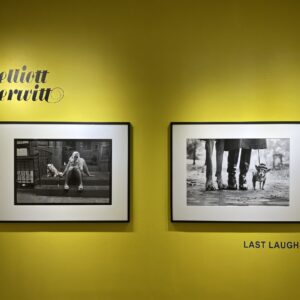JTF (just the facts): Published in 2024 by Perimeter Editions (here). Softcover, 20 x 28 cm, 112 pages, with about 100 photographic reproductions. There are no texts or essays included. (Cover and spread shots below.)
Comments/Context: Patrick Pound, a New Zealand artist currently based in Melbourne, has been described as “an eccentric and obsessive diarist driven by a tireless bureaucratic and archival impulse.” He has been collecting other people’s photographs for over thirty years now, which he then organizes into his own peculiar categories, that he sees as certain visual explanations. As Pound notes, “to collect is to gather your thoughts through things.” He uses his archive to create complex arrangements and installations of photos and objects, suggesting new relationships and ways of seeing.
His photography collection was introduced to a wider audience through an exhibition “Patrick Pound: The Great Exhibition” held at the National Gallery of Victoria, Melbourne in 2017, and a series of images “Animal contacts”, a collection of human animal interactions involving touch, is currently on view at Princeton University Art Museum, as part of the exhibition “Don’t we touch each other just to prove we are still here?: Photography and Touch”.
Pound’s new photobook, produced by Perimeter Editions, is based on a single category found in his collection (that currently has 70,000 photographs). Titled Windows, the book brings together a selection of images from that category and each of the found photographs features a window seen from the outside. Windows is particularly exciting as a photobook object, but its cover might not immediately grab your attention. White and glossy, it features four overlapping photographs, one of them depicting a woman as she is opening a window. Inside, every spread has its own arrangement of photographs, creating an unexpected and playful visual flow. Fragments of text are sprinkled throughout the book. The title, “windows”, repeats on every spread on the left side, and the use of glossy and uncoated papers adds to the physicality of the book.
The opening spread features two photographs. The first one is a small square print showing a man opening a window, it is a bit hard to see the details of what’s happening in the surroundings. The print under it is a vertical image, placed horizontally, and it depicts two men holding a third one hanging outside the window. These shots of windows offer a window into people’s lives through photographs. In addition to found images, there are also photographs from cinema archives produced to advertise movies, making real and imagined worlds intersect. There are photographs of couples kissing, a man talking on the phone, a mother with three young daughters looking out of the window, as well as shots of actors acting.
The edit of the visual flow feels particularly fresh and exciting. The images are cropped, tilted, overlaid, flipped on their back side, and in general arranged in a fun and playful manner. In one instance, three small photos appear on the left side of the spread, while a larger photo of a cross boy looking through the window is covered by four photographs flipped on their backs.
Pound’s project brings to mind the vernacular archive of Peter J. Cohen (currently numbering some 60,000 photographs) and the many photobooks it has sparked, with The Lottery by Melissa Catanese (reviewed here) and Centerfold by Carly Ries (reviewed here) as recent examples. Photobooks often serve as a creative and exciting platform to share vernacular images, as in the case of the archival efforts of Beijing Silvermine, led by the French photography collector Thomas Sauvin; or books by the Austrian photographer Lukas Birk conceived on the intersection of photographic archives and storytelling. All these projects help us to map human culture.
The very last photograph shows a woman waving from out of a window, a fitting photograph to close the book. Windows is at once mundane, fun, and thought provoking. It also represents an exciting exercise in rethinking and recontextualizing found imagery, and presenting these pictures in a creative way.
Collector’s POV: Patrick Pound is represented by Station Gallery in Melbourne (here) and Darren Knight Gallery in Sydney (here). His work has not yet found its way to the secondary markets, so gallery retail remains the best option for those collectors interested in following up.



















